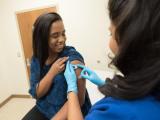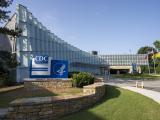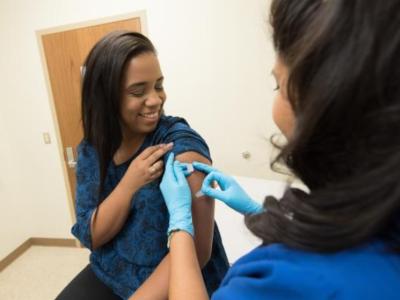Oct 28, 2010 (CIDRAP News) – In a flu vaccine update at a federal advisory meeting today, officials with the US Centers for Disease Control and Prevention (CDC) said early signs suggest flu vaccine uptake in children is on par with last year and that enhanced monitoring for narcolepsy and seizures has turned up no signals of trouble.
Dr Tim Uyeki, a medical epidemiologist with the CDC's National Center for Immunization and Respiratory Diseases, told the CDC Advisory Committee for Immunization Practices (ACIP) that 85% of the vaccine supply for the US market has already been distributed, much more than at this point in past seasons.
Laboratory analyses at the CDC show that the circulating 2009 H1N1 viruses are 99% similar to the H1N1 strain included in the seasonal flu vaccine, Uyeki reported. He said the circulating strains of influenza A/H3N2 and influenza B are also a good match for the vaccine.
Early indications from the CDC's National Immunization Survey suggest that as of Oct 20, the flu immunization rate for children ages 6 months through 17 years is about 19% to 23%, which is similar to this time last year, Uyeki said. Coverage for babies and toddlers appears to be higher than for adolescents. The proportion of parents who say they intend to have their children vaccinated is about 50%, which is also about the same level the CDC saw last year, he said.
Uyeki said monitoring of vaccine uptake through doctor's office billings is indicating somewhat lower coverage levels, but still higher than 2008 levels.
Dr Tom Shimabukuro, with the CDC's National Center for Emerging and Zoonotic Infectious Diseases, said narcolepsy reports related to Europe's 2009 H1N1 vaccine and febrile seizure reports in young children who received one of Australia's seasonal flu vaccines have prompted enhanced safety monitoring of US flu vaccines. He said no signals of narcolepsy or related cataplexy have been seen with the US 2009 H1N1 vaccine and haven't appeared with this year's seasonal vaccines.
Likewise, safety monitoring data have not shown an increase in febrile seizures among US children who have received the seasonal flu vaccine, he said.
The CDC's vaccine safety experts have been watching for any unusual signals with the new high-dose flu vaccine for seniors, especially after one large vaccinator expressed concerns about anaphylaxis links, Shimabukuro said. However, he said the data haven't revealed an increased incidence of anaphylaxis. So far vaccine safety reports for the new vaccine are consistent with what's on the safety insert, which notes a slightly elevated risk of injection site and systemic reactions compared to the regular-dose flu vaccine.
Uyeki said flu activity in the United States has increased slightly, with about the same three-strain virus circulation that many countries are seeing. He noted that some locations, such as India, New Zealand, and Australia, saw the 2009 H1N1 virus dominate over the past few months.
The CDC reported in a global flu update yesterday that during the last week of September and through mid October flu activity was generally low in the northern temperate countries, except for China, especially the southern part of the country. Most of the specimens collected in China have been H3N2 viruses, the report said. In Canada H3N2 is also the predominant strain, though flu levels are low.
Flu activity decreased in southern temperate countries such as South Africa, Australia, and New Zealand, which are at the end of their flu seasons.
Among tropical countries, Bangladesh reported that flu activity has dropped steadily, with H3N2 becoming predominant over the last few weeks.
In Central America, flu strains and activity levels have varied, the CDC reported. Influenza B has been the dominant strain in Nicaragua for several weeks and has more recently become the main strain in Costa Rica and Honduras.
Media reports say that some African countries are reporting outbreaks of 2009 H1N1 flu. Namibia's health ministry said yesterday that 2009 H1N1 outbreaks have hit two schools, one of them in the capital, Windhoek, Agence-France Presse (AFP) reported. Zimbabwe has also linked recent school flu outbreaks to the 2009 H1N1 virus.
See also:
Oct 27 CDC international flu update
Oct 27 AFP story



















